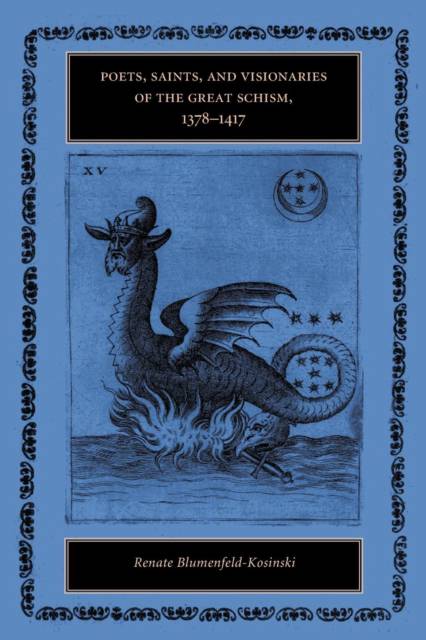
- Afhalen na 1 uur in een winkel met voorraad
- Gratis thuislevering in België vanaf € 30
- Ruim aanbod met 7 miljoen producten
- Afhalen na 1 uur in een winkel met voorraad
- Gratis thuislevering in België vanaf € 30
- Ruim aanbod met 7 miljoen producten
Poets, Saints, and Visionaries of the Great Schism, 1378-1417
Renate Blumenfeld-KosinskiOmschrijving
For almost forty years, from 1378 to 1417, the Western Church was divided into rival camps headed by two--and eventually three--competing popes. The so-called Schism provoked a profound and long-lasting anxiety throughout Europe--an anxiety that reverberated throughout clerical circles and among the ordinary faithful. In Poets, Saints, and Visionaries of the Great Schism, Renate Blumenfeld-Kosinski looks beyond the political and ecclesiastical storm and finds an outpouring of artistic, literary, and visionary responses to one of the great calamities of the late Middle Ages.
Modern historians have analyzed the Great Schism mostly from the perspective of church politics. Blumenfeld-Kosinski shifts our attention to several groups that have not before been considered together: saintly men and women (such as Catherine of Siena, Pedro of Aragon, Vincent Ferrer, and Constance de Rabastens), politically aware and committed poets (such as Philippe de Mézières and Christine de Pizan), and prophets (for example, the mysterious Telesphorus of Cosenza and the authors of the anonymous Prophecies of the Last Popes). Not surprisingly, these groups often saw the Schism as an apocalyptic sign of the end times. Images abounded of the divided Church as a two-headed monster or suffering widow.
A twelfth-century "prelude" looks at the schism of 1159 and the role the famous visionaries Hildegard of Bingen and Elisabeth of Schönau played in this earlier crisis in order to define common threads of "mystical activism" as well as the profound differences with the later Great Schism. Poets, Saints, and Visionaries of the Great Schism will be of interest to students and scholars of medieval and early modern history, religious studies, and literature.
Specificaties
Betrokkenen
- Auteur(s):
- Uitgeverij:
Inhoud
- Aantal bladzijden:
- 256
- Taal:
- Engels
Eigenschappen
- Productcode (EAN):
- 9780271058641
- Verschijningsdatum:
- 15/11/2012
- Uitvoering:
- Paperback
- Formaat:
- Trade paperback (VS)
- Afmetingen:
- 152 mm x 229 mm
- Gewicht:
- 381 g

Alleen bij Standaard Boekhandel
Beoordelingen
We publiceren alleen reviews die voldoen aan de voorwaarden voor reviews. Bekijk onze voorwaarden voor reviews.











